A new era in accelerating scientific discovery
GoogleAds

More news and resources
Collaboration with PNNL
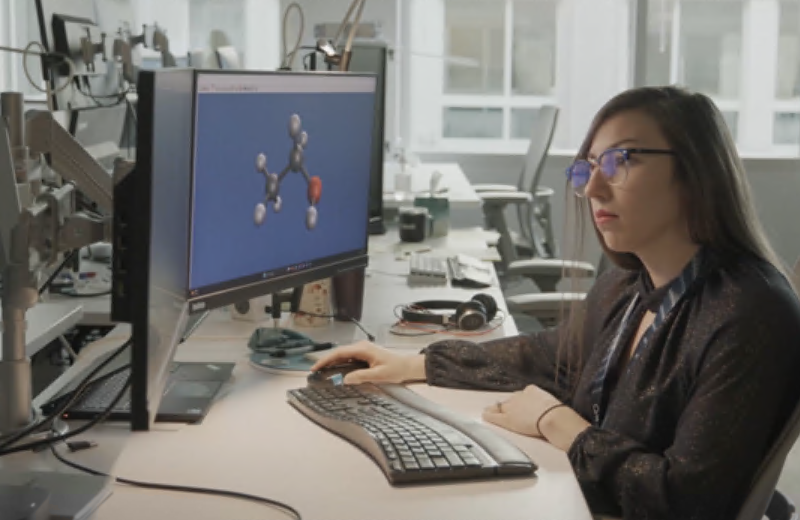 A Microsoft scientist works with the Azure Quantum Elements platform.
A Microsoft scientist works with the Azure Quantum Elements platform.
Download:
Print
Web
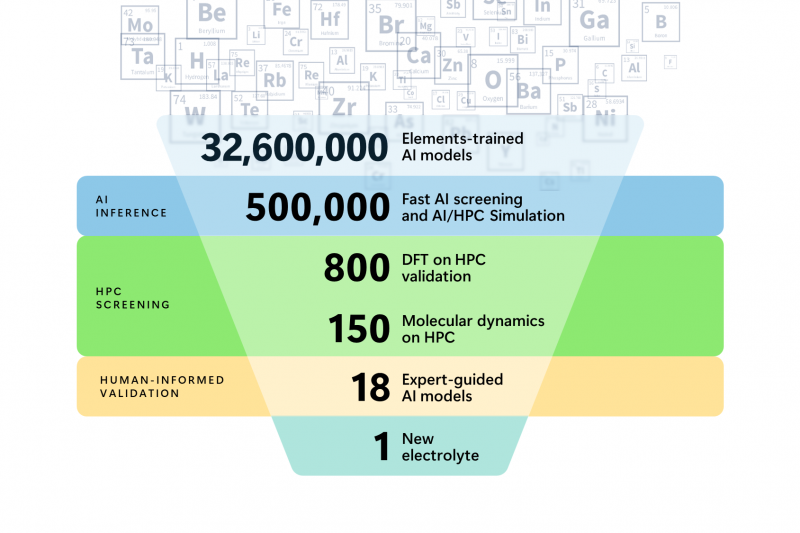 From the 32.6 million materials, AI inference predicted an initial 500,000 stable material candidates. Traditional physics-based HPC simulations further winnowed the pool of candidates. The electrolyte was identified after applying a final set of AI property-prediction filters developed with the PNNL team based on expert criteria.
From the 32.6 million materials, AI inference predicted an initial 500,000 stable material candidates. Traditional physics-based HPC simulations further winnowed the pool of candidates. The electrolyte was identified after applying a final set of AI property-prediction filters developed with the PNNL team based on expert criteria.
Download:
Print
Web
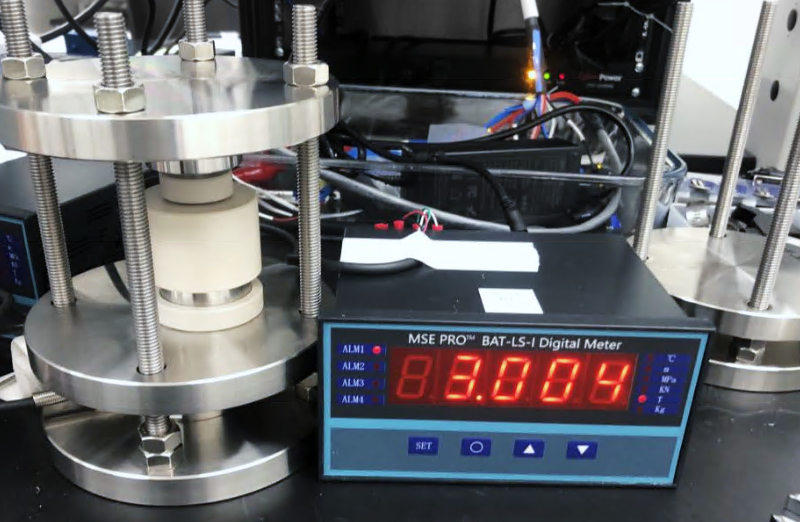 Raw material is ground down to the final material and compacted by a press into a pellet. The pellet is combined with an anode (-) and cathode (+), which allow the prototype to be charged and to provide power.
Raw material is ground down to the final material and compacted by a press into a pellet. The pellet is combined with an anode (-) and cathode (+), which allow the prototype to be charged and to provide power.
Download:
Print
Web
 Brian Abrahamson, chief digital officer at Pacific Northwest National Laboratory. (Photo by Andrea Starr for PNNL)
Brian Abrahamson, chief digital officer at Pacific Northwest National Laboratory. (Photo by Andrea Starr for PNNL)
Download:
Print
Web
 Pacific Northwest National Laboratory materials scientist Shannon Lee mixes raw materials to synthesize a new solid electrolyte, one of the promising candidates predicted using AI and HPC tools in Microsoft’s Azure Quantum Elements service. (Photo by Dan DeLong)
Pacific Northwest National Laboratory materials scientist Shannon Lee mixes raw materials to synthesize a new solid electrolyte, one of the promising candidates predicted using AI and HPC tools in Microsoft’s Azure Quantum Elements service. (Photo by Dan DeLong)
Download:
Print
Web
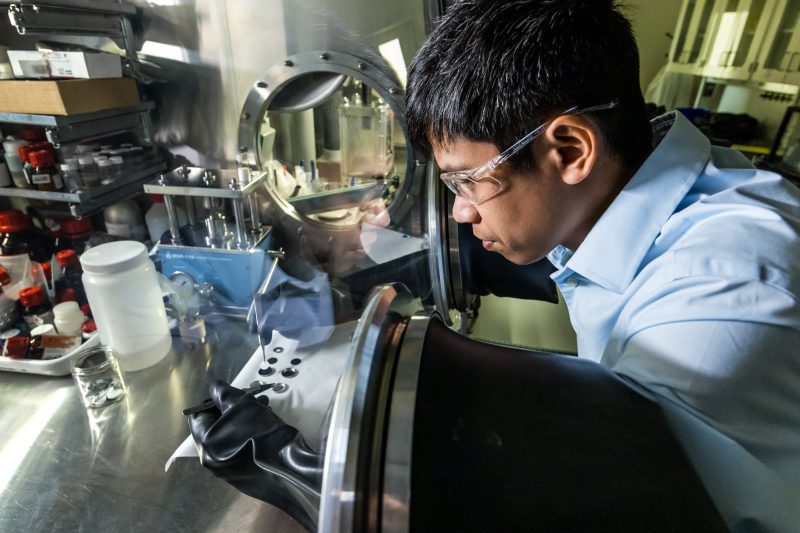 Dan Thien Nguyen, a Pacific Northwest National Laboratory materials scientist, assembles a coin cell with the synthesized solid electrolyte. (Photo by Dan DeLong)
Dan Thien Nguyen, a Pacific Northwest National Laboratory materials scientist, assembles a coin cell with the synthesized solid electrolyte. (Photo by Dan DeLong)
Download:
Print
Web
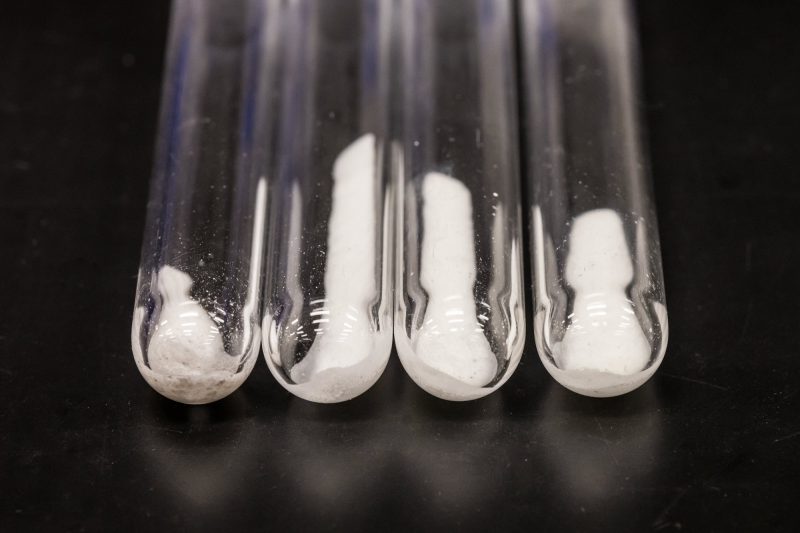 Samples of the new solid electrolyte discovered by Microsoft AI and HPC tools. (Photo by Dan DeLong)
Samples of the new solid electrolyte discovered by Microsoft AI and HPC tools. (Photo by Dan DeLong)
Download:
Print
Web
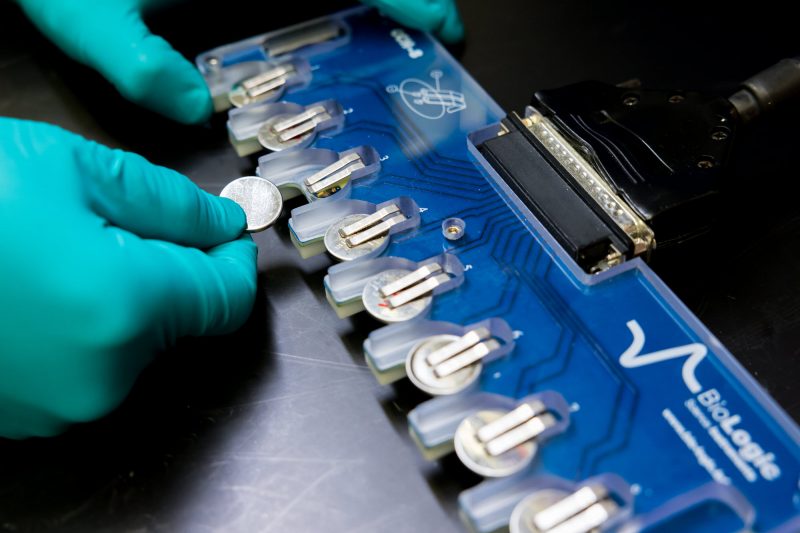 Batteries with the new electrolyte are tested to ascertain how they charge and discharge. (Photo by Dan DeLong)
Batteries with the new electrolyte are tested to ascertain how they charge and discharge. (Photo by Dan DeLong)
Download:
Print
Web
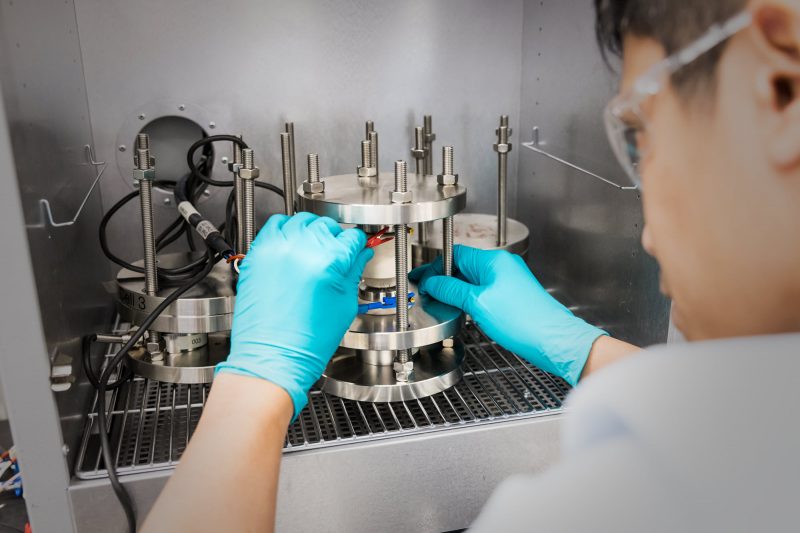 Pacific Northwest National Laboratory materials scientist Dan Thien Nguyen examines the performance of the new solid electrolyte in full cell configuration under controlled pressure and temperature. (Photo by Dan DeLong)
Pacific Northwest National Laboratory materials scientist Dan Thien Nguyen examines the performance of the new solid electrolyte in full cell configuration under controlled pressure and temperature. (Photo by Dan DeLong)
Download:
Print
Web
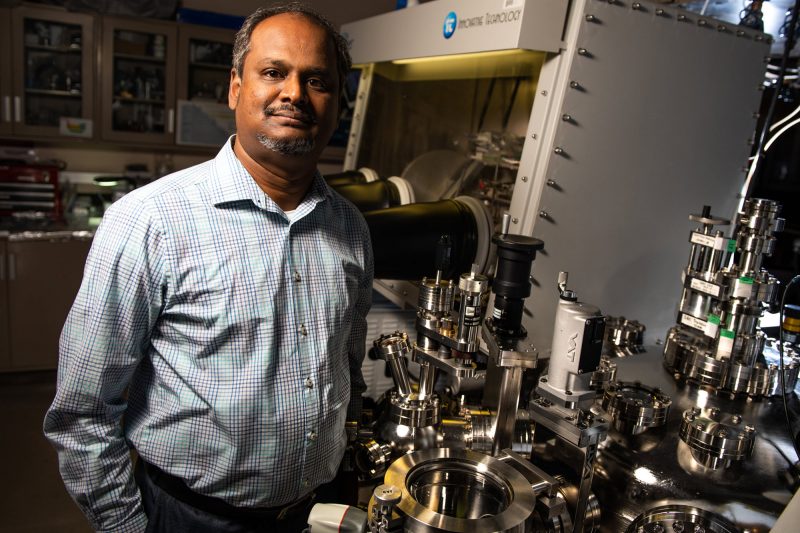 Vijay Murugesan, material sciences group lead at Pacific Northwest National Laboratory, says the Microsoft AI and HPC tools allow scientists to eliminate the time-consuming trial-and-error discovery steps and focus on the best candidates for testing. (Photo by Andrea Starr for PNNL)
Vijay Murugesan, material sciences group lead at Pacific Northwest National Laboratory, says the Microsoft AI and HPC tools allow scientists to eliminate the time-consuming trial-and-error discovery steps and focus on the best candidates for testing. (Photo by Andrea Starr for PNNL)
Download:
Print
Web
Azure Quantum Elements launch
 Illustrative design of Microsoft’s quantum supercomputer in an Azure Datacenter
Illustrative design of Microsoft’s quantum supercomputer in an Azure Datacenter
Download:
Print
Web
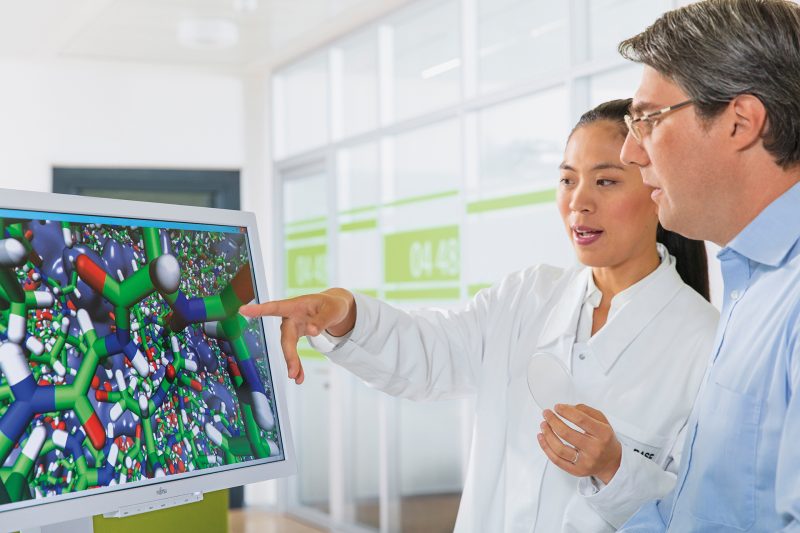 BASF chemist Dr. Fangfang Chu (left) and molecular simulation expert Dr. Eduard Schreiner discuss the computer simulation of microcapsules that enclose and protect the active ingredients of products like vitamins. BASF is using Azure Quantum Elements to help increase the speed and efficiency of development. (Credit: BASF SE)
BASF chemist Dr. Fangfang Chu (left) and molecular simulation expert Dr. Eduard Schreiner discuss the computer simulation of microcapsules that enclose and protect the active ingredients of products like vitamins. BASF is using Azure Quantum Elements to help increase the speed and efficiency of development. (Credit: BASF SE)
Download:
Print
Web
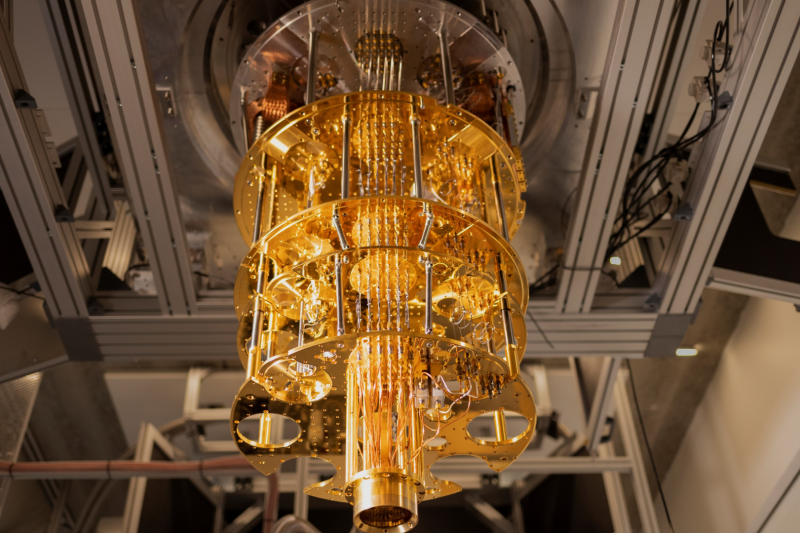 A cryostat in the Azure Quantum development lab
A cryostat in the Azure Quantum development lab
Download:
Print
Web
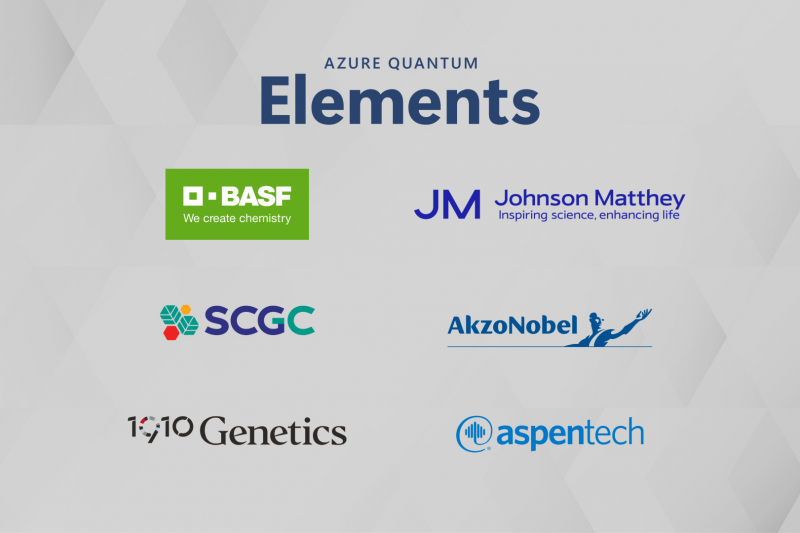 Some of the industry innovators who have already adopted Azure Quantum Elements
Some of the industry innovators who have already adopted Azure Quantum Elements
Download:
Print
Web
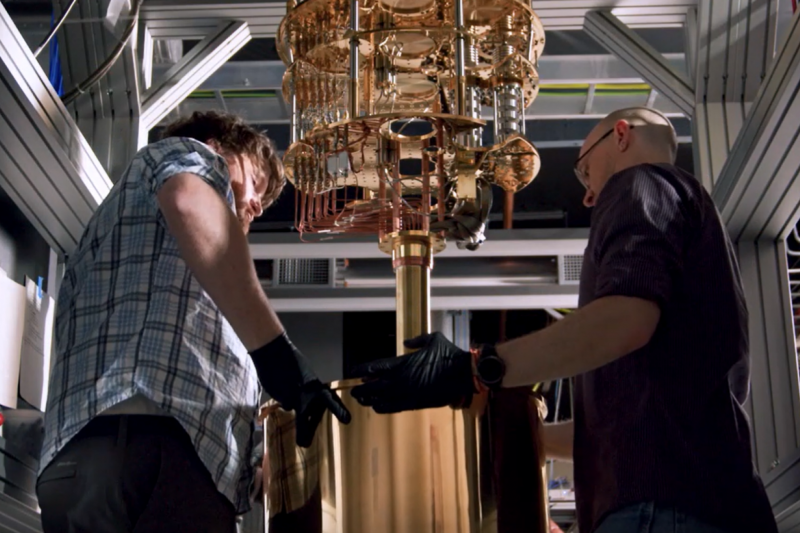 Senior cryogenic engineers work in Microsoft’s Azure Quantum development lab.
Senior cryogenic engineers work in Microsoft’s Azure Quantum development lab.
Download:
Print
Web
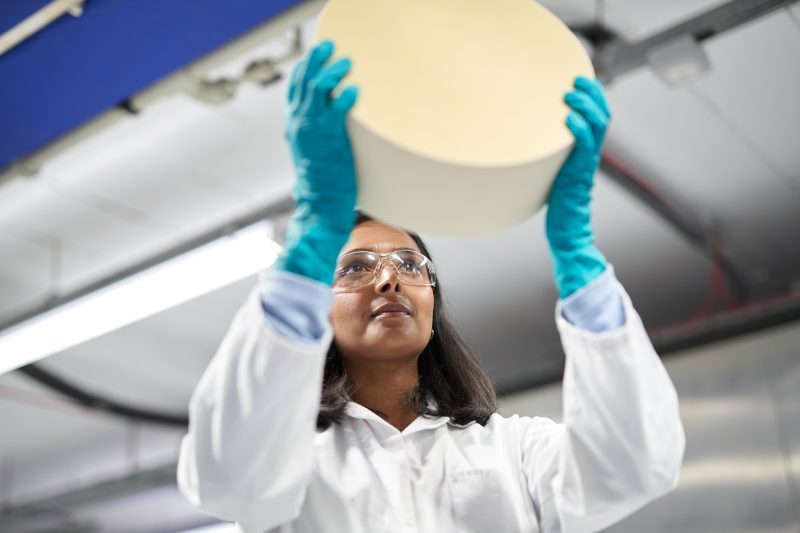 A Johnson Matthey engineer inspects a monolith, the catalyst support that is a key component of a catalytic converter. Johnson Matthey scientists are using Azure Quantum Elements to accelerate research into the chemicals that coat a monolith and convert harmful exhaust gases into nontoxic products. (Credit: Johnson Matthey)
A Johnson Matthey engineer inspects a monolith, the catalyst support that is a key component of a catalytic converter. Johnson Matthey scientists are using Azure Quantum Elements to accelerate research into the chemicals that coat a monolith and convert harmful exhaust gases into nontoxic products. (Credit: Johnson Matthey)
Download:
Print
Web
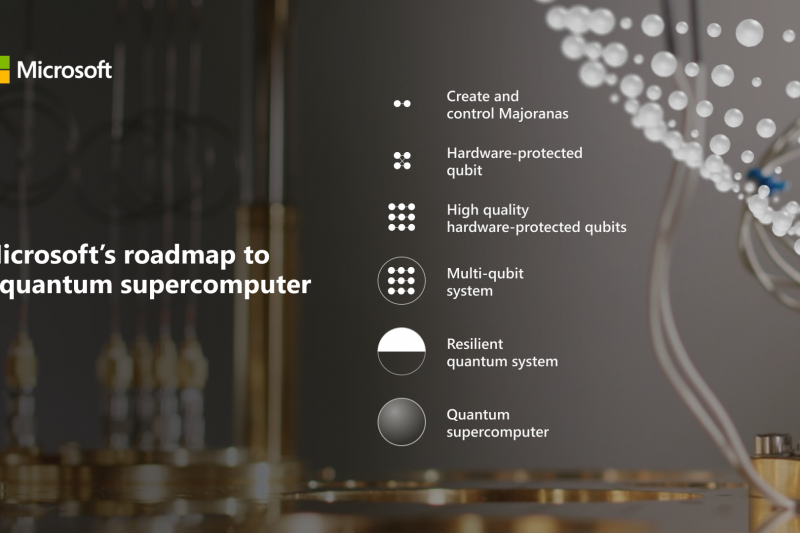 We have achieved the first milestone towards a quantum supercomputer
We have achieved the first milestone towards a quantum supercomputer
Download:
Print
Web
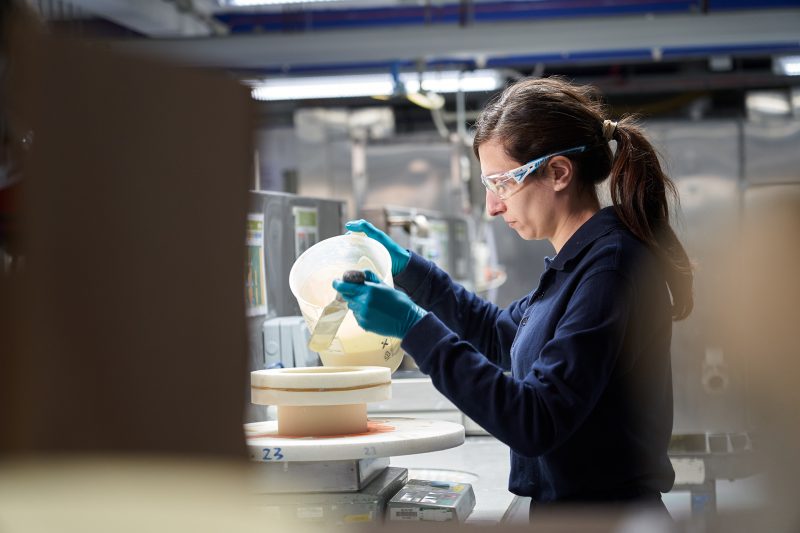 A Johnson Matthey employee applies a catalyst coating to a supporting structure – a key component of a catalytic converter. Johnson Matthey scientists are using Azure Quantum Elements to speed up innovation into sustainable technologies. (Credit: Johnson Matthey)
A Johnson Matthey employee applies a catalyst coating to a supporting structure – a key component of a catalytic converter. Johnson Matthey scientists are using Azure Quantum Elements to speed up innovation into sustainable technologies. (Credit: Johnson Matthey)
Download:
Print
Web
 As the industry progresses quantum hardware will fall into one of the three categories of Quantum Computing Implementation Levels
As the industry progresses quantum hardware will fall into one of the three categories of Quantum Computing Implementation Levels
Download:
Print
Web
Videos
Accelerating scientific discovery
Azure Quantum Elements vision
Microsoft’s physics breakthrough
Johnson Matthey and Azure Quantum
Source : https://news.microsoft.com/azure-quantum/
Auteur :
Date de Publication : 2023-12-15 03:04:09
Le droit d’auteur pour le contenu syndiqué appartient à la source liée.
GoogleAds




